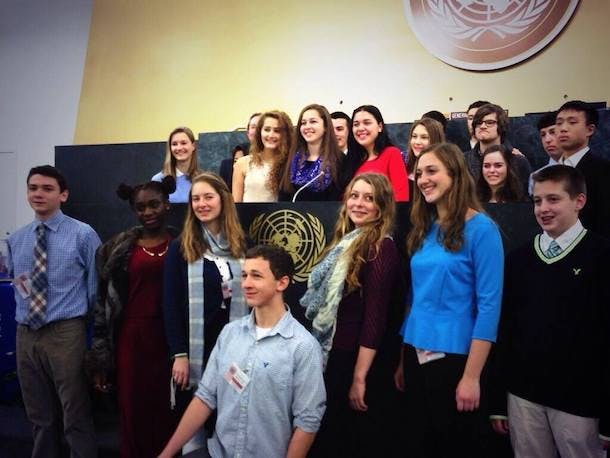
How can we make youth initiatives sustainable?
I was asked this question at the Youth Assembly at the United Nations during a session called “Engaging Youth in Achieving the Sustainable Development Goals (SDGs).” The Youth Assembly is recognized as the largest and longest running youth conference at the United Nations; its mission is to empower youth to achieve sustainable development on the individual, local, and global levels.
As the Youth Engagement Manager for the United Nations Association of the USA, a program of the UN Foundation, I advise our GenUN campus chapter network. My goal is to empower GenUN student leaders to make a positive impact in their global and local communities. Our website is full of resources for student leaders who want to start a student organization on their campus that is dedicated to supporting the vital work of the UN.
Within GenUN, we have a goal to both create new chapters and maintain active chapters, which exist on over 45 campuses through the United States. Generally, I find that the hardest part of this equation is sustaining our current chapters. Students are a transient population. Even the most active student leader usually has about 24 months in their college career to get a program off the ground – this can be punctuated by exams, study abroad, internships, and family life.
Young people have great passion and creative, new ideas. Because of their enthusiasm for projects and initiatives; they are often successfully in launching their ideas and seeing them through the first few years. However, they often lack the resources to connect their ideas to institutional or systematic change.
I propose the following strategies for students to create sustainable initiatives on their campuses:
1. Leave a legacy of leadership: A true leader doesn’t ride the elevator up alone, they hold the door open and send the elevator back down for others. They make room for others, even when it’s uncomfortable. As student leaders advance through their organization’s leadership positions, I encourage them to identify younger leaders or look outside the organization to find those who aren’t represented. Leaders need to invest time in leadership development for organization members; set short-term and long-term goals and include others in creating a vision for the organization. When others are involved in creating the vision, they are more likely to contribute to that vision.
2. Avoid burnout: Passionate student leaders work hard to get their organizations off the ground; they answer emails at 2:00 a.m., they sacrifice social outings to attend executive meetings, and they often have to make tough or unpopular decisions. While your hard work is appreciated, your self-care comes first. Don’t let your fire burn out. By delegating tasks and addressing tip number one (leave a legacy of leadership), leaders can avoid burnout by asking for help and creating leaders to take on the work.
3. Translate online connections to offline action: “Clicktivism” is a precarious trend – the feeling that retweeting or using a hashtag is the action of activism. While we encourage social media engagement among young people, it cannot end there. Social media engagement with youth should be the entry point, not the end goal.
4. Build community partnerships: Youth initiatives can often be fragmented and short-lived. Find a way to connect your project or organization to institutional departments or community organizations. Don’t let your ideas exist in a vacuum. Perhaps your idea can become a department program at your university or an annual event at a local nonprofit.
5. Find cross-generational allies, mentors, and advisors: Students often complain that the “administration” is not listening to them, but the administration is comprised of people, and it’s about finding individuals who will listen. With a little perseverance and dedication to communication and understanding, young people can find allies in Generation X, Baby Boomers, and beyond. Sustainable initiatives run by youth can be so much more effective when they are supported by and informed by the generations who laid the groundwork for us. Advisors for student organizations can hold institutional knowledge that can be lost when students graduate. Engage with and seek out advisors, mentors, and allies for your initiatives, and they will be stronger and more effective.
Watch the full panel here: Engaging Youth in Achieving the SDGs.



 View All Blog Posts
View All Blog Posts